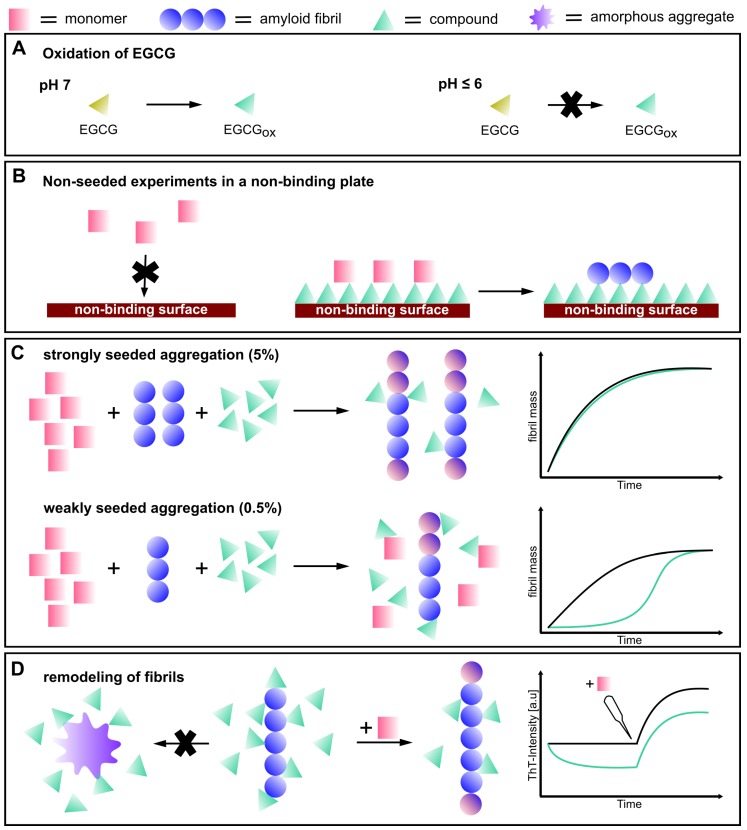Figure 11.
Schematic depiction of the effects of the compound EGCG on -synuclein amyloid fibril formation. (A) EGCG oxidizes at pH 7, whereas it is stable at pH 6 and below. (B) illustrates that -synuclein cannot bind to the non-binding surface of the multi-well plate, while in particular, EGCGox can bind to the surface and facilitate the formation of amyloid fibrils. (C) EGCG displayed almost no effect on a strongly seeded aggregation reaction (5% seeds), whereas a weakly seeded aggregation reaction (0.5% seeds) is inhibited more strongly. (D) The compound seems to interact with amyloid fibrils, but was not found to be able to remodel the fibrils into amorphous, seeding-incompetent aggregates. When fresh monomer was added, the fibrils had the same seeding efficiency as the control fibrils.

